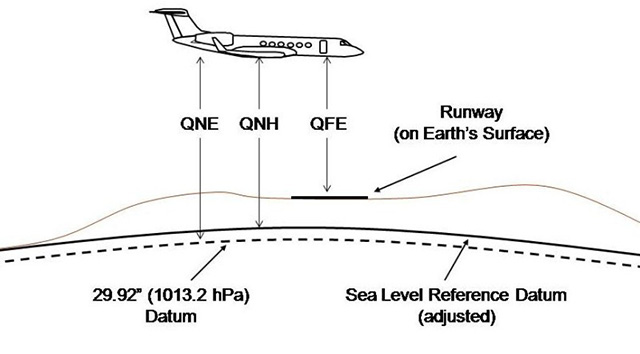What the heck is QNH?!
As a pilot, you know that altitude is a crucial factor in safe and successful flight. But do you know the difference between QNH, QFE, and QNE? These three aviation terms may seem similar, but they each measure pressure in distinct ways, and understanding the differences between them is key to navigating the skies with confidence.
QNH, QFE, and QNE are all terms used in aviation to describe pressure measurements. These measurements are used by pilots to determine the altitude of their aircraft, which is a crucial factor in safe and successful flight.
QNH stands for "Quasi-Non-Hydrostatic," and it is a pressure measurement that is used to indicate the height of an aircraft above sea level. When a pilot receives a QNH reading, they use it to determine the altitude of their aircraft above sea level. This measurement is commonly used in areas where the terrain is relatively flat, as it provides a consistent reference point for altitude.
QFE is short for "QNH at Field Elevation," and it is a pressure measurement that is used to indicate the height of an aircraft above the ground at a specific airport. When a pilot receives a QFE reading, they use it to determine the altitude of their aircraft above the ground at the airport where they are currently located. This measurement is commonly used at smaller airports where the terrain is not flat and may vary significantly.
QNE, on the other hand, stands for "QNH at Standard Altitude," and it is a pressure measurement that is used to indicate the altitude of an aircraft in relation to a standard pressure level. When a pilot receives a QNE reading, they use it to determine the altitude of their aircraft in relation to a standard pressure level of 1013.25 millibars. This measurement is commonly used at higher altitudes, as it provides a consistent reference point for altitude that is not affected by changes in the local terrain.
In summary, QNH, QFE, and QNE are all important pressure measurements used in aviation to determine the altitude of an aircraft. QNH is used to indicate the height of an aircraft above sea level, QFE is used to indicate the height of an aircraft above the ground at a specific airport, and QNE is used to indicate the altitude of an aircraft in relation to a standard pressure level. Understanding the differences between these three measurements is crucial for pilots navigating the skies and ensuring the safety of their flights.



Comments
Post a Comment